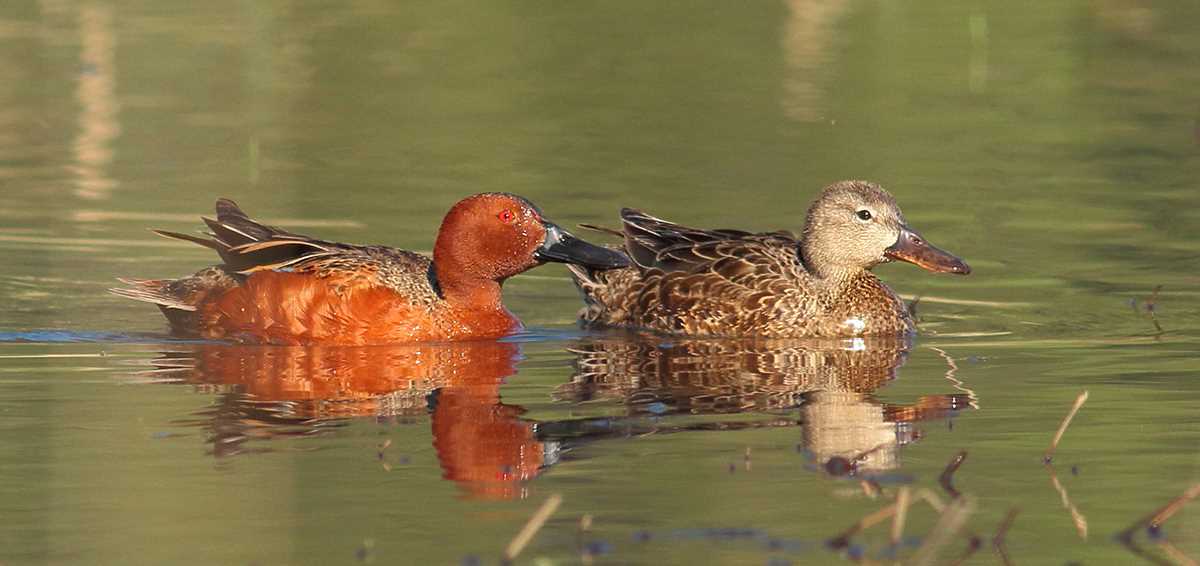Emphasizing the total economic value of natural landscapes is essential to protecting them for wildlife and sportsmen

By Steve Adair, Ph.D.
Around the turn of the 20th century, our nation began experiencing large-scale conversion of landscapes that had existed for thousands of years. Vast grasslands, forests, and wetland complexes were plowed, cleared, and drained for agriculture, lumber, and living space. Rivers were dammed and diked to control flooding and provide year-round water sources, and extraction of minerals, oil, and gas accelerated to fuel industrial growth. All these forms of development have also had a profound impact on the continent's wildlife.
Most of the sweeping changes that have taken place on the North American landscape occurred well before the concept of a conservation ethic had evolved. Most people believed the land should be tamed and altered for economic interests. Bushels of crops, barrels of oil, board feet of timber, kilowatts of energy, and acre-feet of water had real economic worth, but little thought was given to the value of wetlands, rivers, forests, grasslands, and wildlife. This mindset remained entrenched thoughout the first half of the 20th century.
As wildlife populations dwindled and pollution threatened air and drinking water, however, society finally began to take notice. Aldo Leopold's A Sand County Almanac and Rachel Carson's Silent Spring urged humanity to coexist with nature instead of conquering it. More and more people grew to appreciate the value of wildlife, open space, natural beauty, and clean air and water to their quality of life and began striving to conserve the continent's environment and biodiversity. But quantifying the real economic value of wild places and natural resources remained elusive. When land-use decisions were made, wildlife usually lost to forms of development that offered traditional economic benefits.
During the past decade, conservationists and economists began to assess the benefits natural systems provide to society in monetary terms. One group of researchers estimated that the world's natural ecosystems provide some $33 trillion in economic benefits each year. Wetlands contributed 45 percent of this total ($14.9 trillion), providing clear evidence of the economic importance of conserving wetlands. In North America, for example, a 9,000-acre wetland complex along the Charles River in Massachusetts has been recognized as saving surrounding communities $17 million per year in potential flood damages, which could occur if the wetlands were drained. And Louisiana's threatened coastal marshes are now valued not only for supporting a $300 million commercial fishery, but also for their role in buffering New Orleans and other communities from hurricane damage.
With knowledge has come action. New York City recently invested $1.5 billion to protect and restore wetlands and watersheds as a more cost-effective alternative to building water-treatment plants. Estimates suggest these conservation efforts have saved the city from $3 billion to $8 billion in construction costs. In another example, American Electric Power, one of the country's largest providers of electricity, has spent more than $20 million to protect and restore wildlife habitat and reduce (sequester) greenhouse gases.
As technological advances allow people greater choice on where they live and work, natural landscapes have also become an important aspect of regional economic vitality. Open space, scenic vistas, abundant fish and wildlife, clean air and water, and outdoor recreational opportunities contribute to residents' quality of life. According to Thomas Power, an economist at the University of Montana, these values have fueled explosive economic growth in the Rocky Mountains and desert southwest in recent years. Power argues that protecting natural landscapes, which are unique and irreplaceable, makes great economic sense. As natural amenities become more rare, they become more valuable.
Healthy wildlife populations and natural landscapes are now clearly recognized as important economic forces in North America. Unfortunately, as the human population continues to grow across the continent, pressure to use remaining water resources and open space will increase. Will we divide these limited natural resources into the minimum amounts required to sustain human life, or will we protect large landscapes to allow for a higher quality of life? For those of us who love a sunrise over an expansive marsh and a sky filled with whistling wings, the answer is clear. To help conserve these wild places, we must remain diligent in our conservation efforts and build greater awareness about the economic values of the landscapes we treasure.
Dr. Steve Adair is director of conservation programs at DU's Great Plains office in Bismarck, North Dakota.